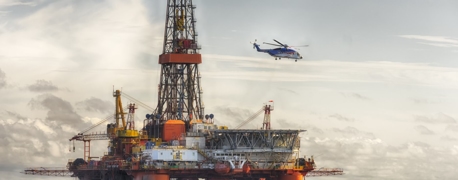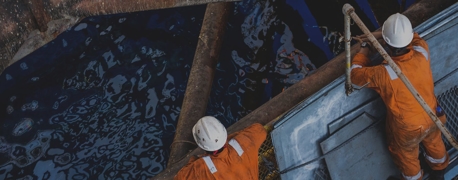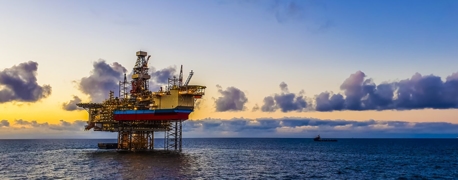How Oil Rig Regulations Have Changed Since Deepwater Horizon

In April 2010, the world witnessed one of the worst oil rig explosions in the industry’s history. 11 workers died in the accident, and many others were injured. The environment was drastically affected as well, leading to billions in economic losses for the maritime industry. Multiple equipment failures resulted in millions of barrels of oil being leaked into the Gulf of Mexico. Although extensive efforts were made in the cleanup, the impact of the leak on marine life, plant life, and animal life was far-reaching. Since the disaster, changes and improvements have been made in many oil rigs in the hopes of preventing a similar catastrophe in the future.
Improved Wells
A failed well was one of the factors leading to the Deepwater Horizon disaster. Cement sealing that lined the hole in the ocean floor and secured the pipe from the rig in place was not strong enough to withstand the pressure and ultimately failed. As a result, there was a blowout that led to a massive explosion and oil spill.
To prevent this from happening again, federal regulations require an engineer to certify the ability of the cement to function correctly in the extreme environment of the deep sea. BP, the company responsible for the Deepwater Horizon event, further promised to test the cement with a BP engineer or third-party inspector.
Better Blowout Preventer
A blowout preventer (BOP) is a device that is used to cut off the flow of gas and oil before it rushes too quickly up the pipe inside the oil rig. In the Deepwater Horizon explosion, the BOP malfunctioned and wasn’t able to prevent oil and gas flow. The BOP is equipped with a shear ram that cuts into the pipe and shuts off flow in the event of an emergency or sudden leak.
Federal regulation now requires improved documentation that BOPs are running and operating crew members are thoroughly trained. Additionally, the BOPs are now outfitted with a more powerful pair of shears. With two shears instead of one, new BOPs have built-in redundancy and are more effective.
More Robotic Training
Drilling companies have used robots for decades. Most of these remotely operated vehicles (ROVs) accomplish tasks from closing valves and turning bolts to lifting equipment and transmitting video to the oil rig’s control rooms. Often, oil rigs have multiple ROVs working on different tasks. In the Deepwater Horizon disaster, ROVs worked on various emergency and relief tasks.
Now, federal regulations mandate that each oil rig has its own ROV and that crew members are thoroughly trained in its operation and what to do in case of an emergency. In addition, the ROVs should now be able to close the shear rams and shut off a pipe in case of another emergency like Deepwater Horizon.
Improved Disaster Prevention / Preparation
Because the Deepwater Horizon disaster happened so quickly, engineers and those handling the emergency were forced to design and improvise in the moment. In the heat of the moment, robots were used in ways they had not been before, and new techniques were invented for handling the problem.
As a result of their innovation, emergency technology has improved and is better streamlined to handle catastrophes of that magnitude. Major oil drillers have also come together to create the Marine Well Containment Company, a company with the goal of producing better systems to control blowouts.
Better Oil Control Technology
After the oil spill, BP was forced to use every method imaginable to attempt to contain and remove oil from the water and the shoreline. Ships skimmed oil from the surface, burned the oil slick in open water, and even used chemicals to break up the oil in the water. However, the side effects of these methods are unknown.
Since Deepwater Horizon, better methods are available for tracking oil spills and better programs in place for containing oil if another disaster like this happens again. Many are concerned, however, that containment methods such as burning or chemical dispersants are also harmful to the environment.
More Stringent Drilling Audits and Safety Protocols
In the wake of the Deepwater Horizon disaster, federal and international bodies recognized the need for more rigorous safety checks. Audits of drilling processes, safety equipment, and operational protocols are now far more frequent and intensive. In addition, regulatory bodies have put forth a series of new safety protocols that drilling operations must follow. These include consistent monitoring of well pressure and flow indicators, more frequent equipment maintenance checks, and enhanced emergency response protocols. Drilling companies are also required to have a safety and environmental management system in place, ensuring the company has a comprehensive plan and strategy to prevent accidents and respond swiftly in case of emergencies.
Emphasis on Environmental Impact Assessments
Environmental assessments have always been a part of the oil drilling process. However, after the Deepwater Horizon disaster, there has been a renewed emphasis on conducting thorough environmental impact assessments (EIAs) before any drilling activity commences. These EIAs examine the potential effects of proposed activities on the environment, including risks to marine life, potential for oil spills, and long-term ecological impacts. Based on these assessments, drilling operations may be adjusted, postponed, or even canceled if the environmental risks are deemed too high. This not only ensures that marine environments are protected but also serves to reduce the potential liabilities and economic repercussions for drilling companies in the event of a disaster.
A Safer Future For Offshore Drilling
The Deepwater Horizon disaster will forever remain etched in history as a stark reminder of the grave consequences of negligence and the delicate balance between industrial ambitions and environmental preservation. It led to monumental shifts in the way the oil industry and regulatory bodies approached safety and environmental protocols. The aftermath wasn't just about pointing fingers and assigning blame, but about ensuring such an incident never happens again. From enforcing rigorous safety checks to focusing on the environmental impact of drilling activities, efforts have been significant and far-reaching. The transformations in the industry post the disaster underline the critical importance of robust regulations and the necessity of continuous adaptation. While the past cannot be changed, the lessons learned from the Deepwater Horizon tragedy have paved the way for a safer, more responsible future for offshore drilling.
- Categories


